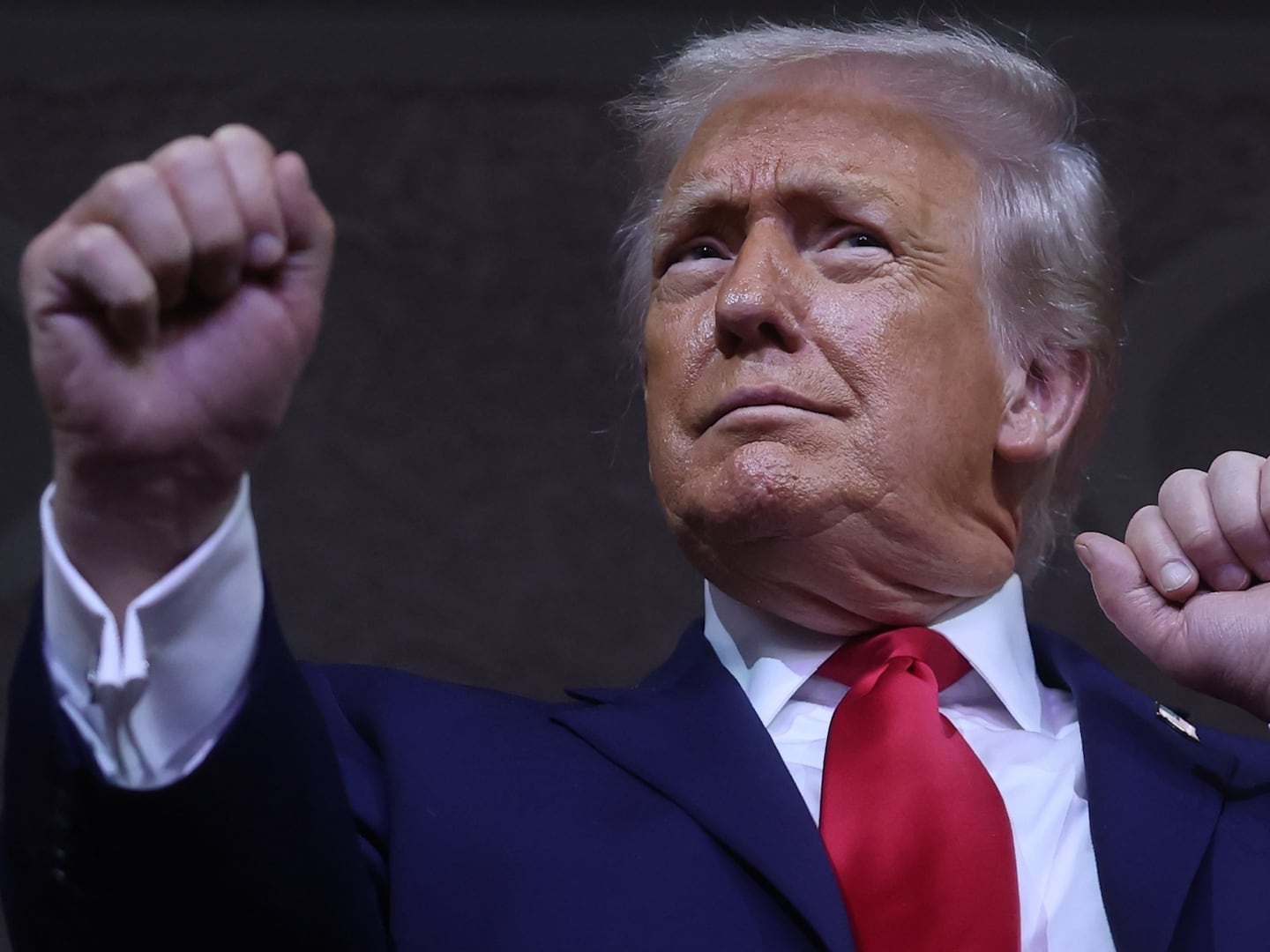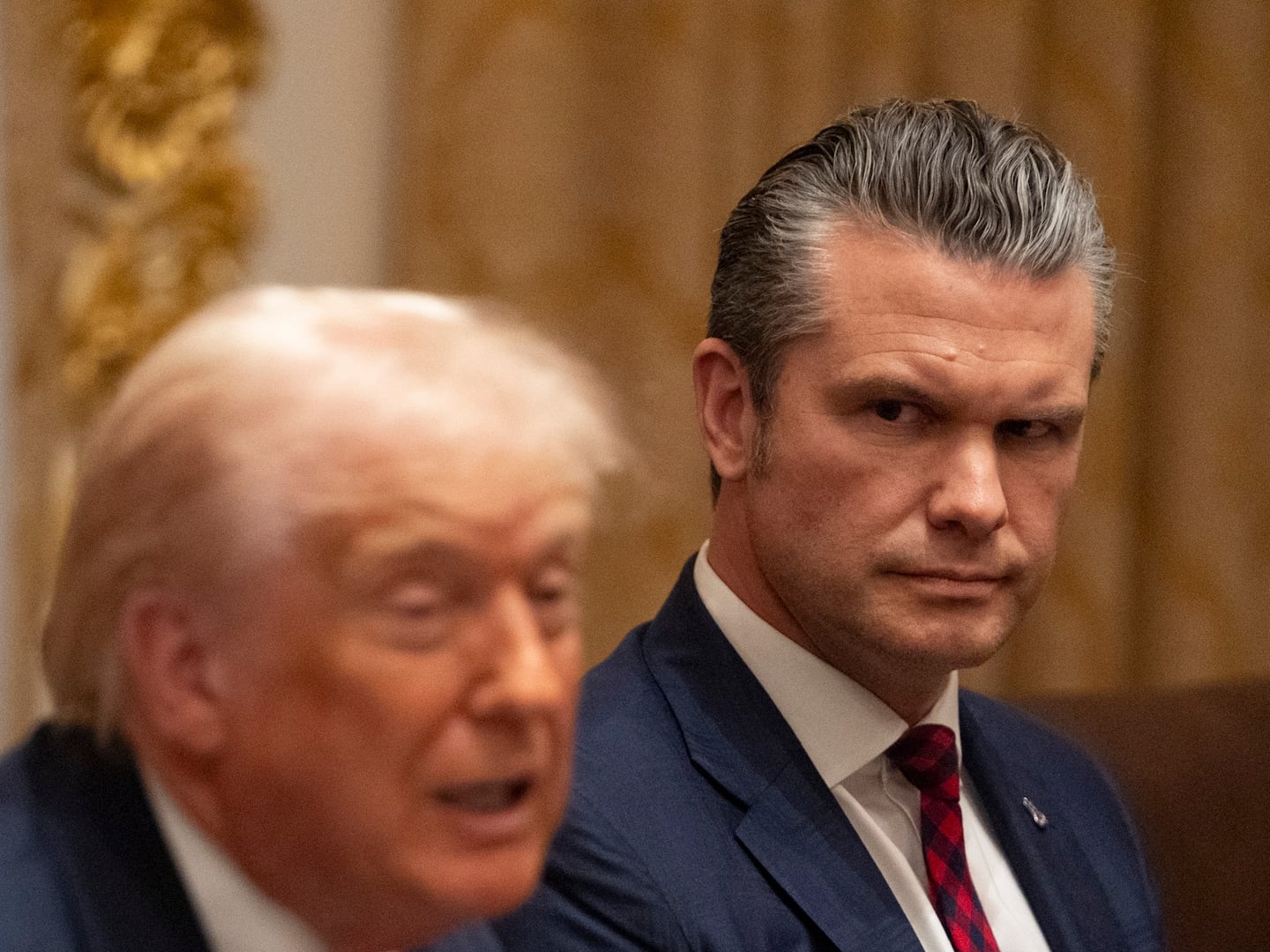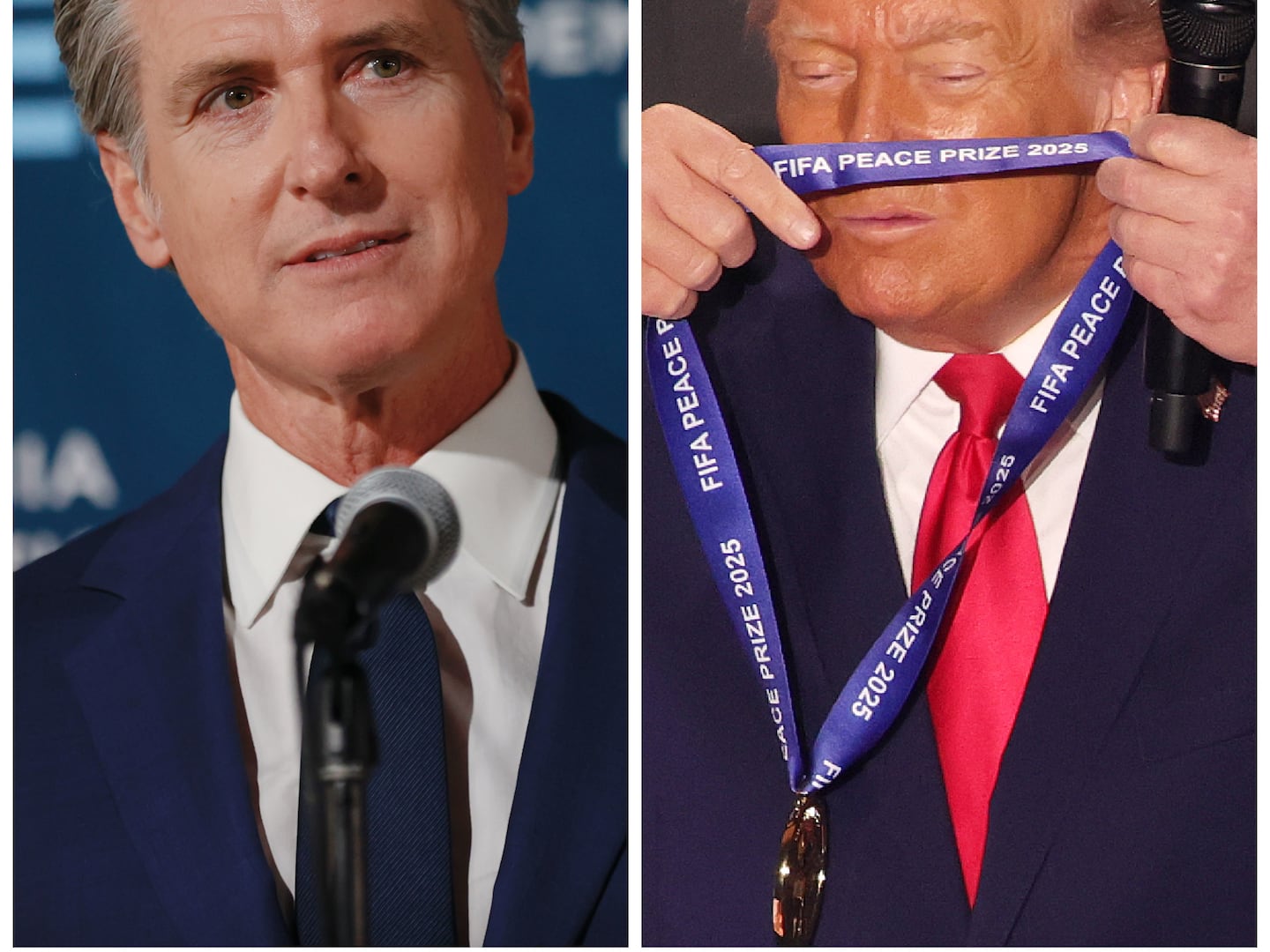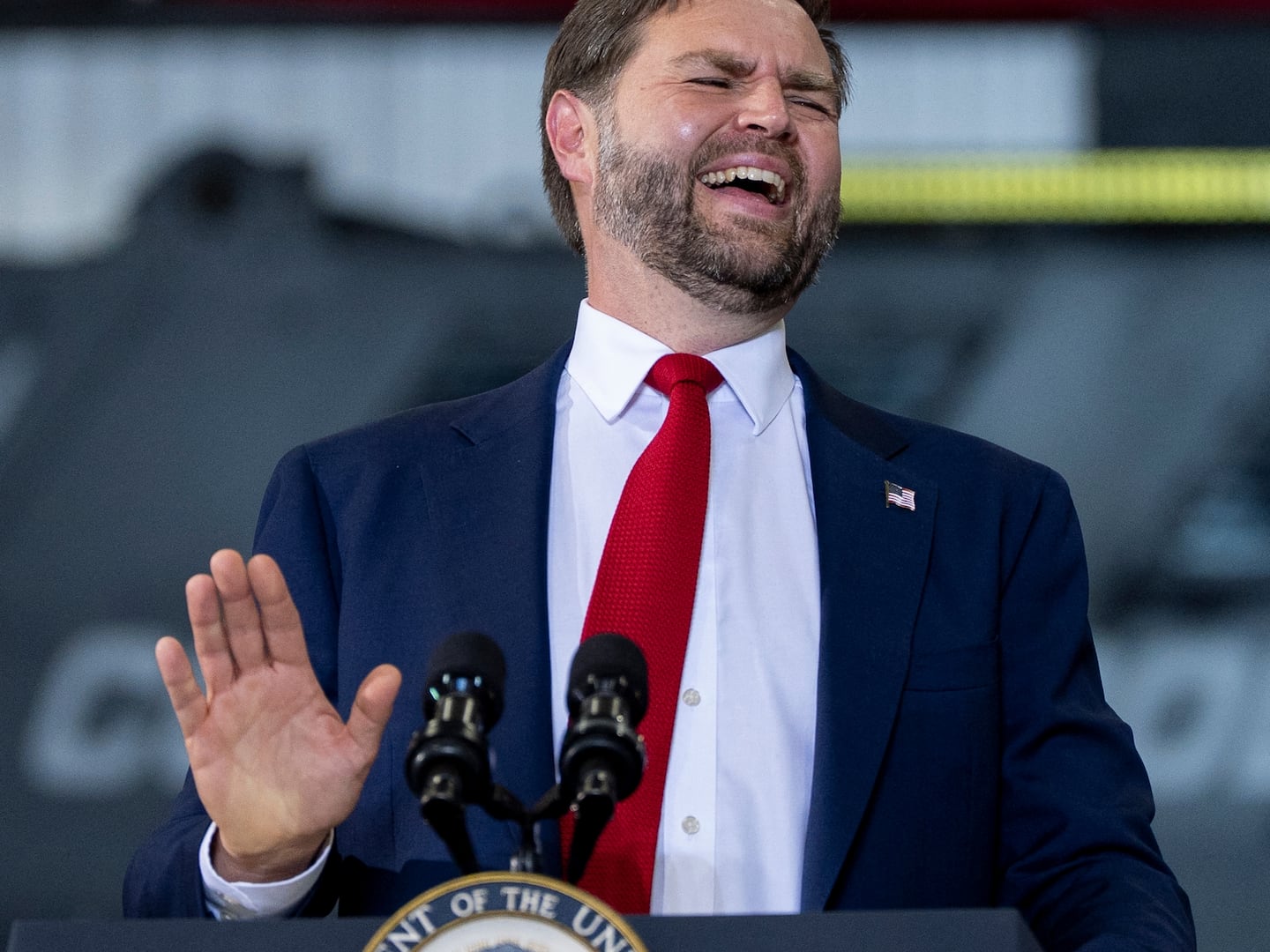This fall, The New York Times reported that Deputy Attorney General Rod Rosenstein had raised with Justice Department and FBI officials back in 2017 the possibility of declaring Donald Trump unable to serve as president via the 25th Amendment—specifically, saying that he might prove able to persuade then-Homeland Security Secretary John Kelly and then-Attorney General Jeff Sessions to mount this effort.
Rosenstein denied the allegation. But it was far from the first—and certainly won’t be the last—speculation about using the “removal for disability” amendment to separate President Trump from the powers and duties of the office.
Dean Obeidallah wrote for The Daily Beast earlier this year that the 25th Amendment might be a way around the Department of Justice’s current guidance that a sitting president cannot be indicted. “Now if the obligations of mounting a legal defense truly became too time-consuming for Trump,” Obeidallah wrote, “there’s an easy remedy: the 25th Amendment. That allows the president to voluntarily empower the vice president to act as president for a designated period of time, just like past presidents have temporarily transferred their powers to the vice president when undergoing anesthesia for medical procedures.” And the anonymous senior government official who in September wrote the “I Am Part of the Resistance Inside the Trump Administration” op-ed in The New York Times admitted “early whispers within the cabinet of invoking the 25th Amendment, which would start a complex process for removing the president.”
But most of this speculation about the saving grace of the 25th Amendment misses an important element that makes its application extremely unlikely. Despite all the chattering about lining up Cabinet secretaries, the amendment requires either Donald Trump or Mike Pence to make the determination of inability (via, respectively, its Section 3 voluntary transfer of power or its Section 4 involuntary transfer of power). Period. The Cabinet only matters in the latter case—and only if the vice president is also willing to take the dramatic step.
And yet the president and vice president appear to be among the least likely people in America to invoke the amendment.
That’s probably how the drafters of the amendment would want it. Even if the president were to behave more erratically, perhaps with increasing doubts about his sanity, the 25th amendment is likely to remain a dead letter. It was meant to apply more to cases of true presidential incapacity—like a massive stroke or a coma—than to instances of bad judgment and mercurial temperament.
“The President is a very sick man,” the doctor’s bulletin announced, and “absolute rest is essential for some time.”
This statement from Woodrow Wilson’s physician on October 3, 1919, told the world two truths about the president: his illness was serious, and he would be out of contact for a while. It withheld much, much more. Nothing substantial was revealed that day, nor during the next couple of months, about the cause, Wilson’s prognosis, or courses of treatment.
The information-starved public wanted more. So did senators, about to debate the treaty that could bring the United States into the League of Nations—a cause the president championed above all others. Wilson’s own cabinet lacked guidance on an ever-growing stack of executive actions. Even the man who could at any moment be called upon to take Wilson’s position, the vice president of the United States, was kept in the dark.
The presidency and much of the executive branch, for months, ground to a halt.
Wilson had departed Washington, D.C., one month earlier to give speeches from the back of a train, attend parades, shake thousands of hands, and attend various political meetings to try to win popular support for his pet project: getting the United States into the League of Nations. The exertion strained him nearly from the start of the trip, in the form of serious headaches.
On an overnight train ride after an event on September 25 in Pueblo, Colorado, Edith Wilson was surprised by a knock on the door between her husband’s room and her own. She opened it to find him in obvious physical distress, complaining about a crushing headache. By morning, the left side of Wilson’s face looked fallen and didn’t move; saliva dribbled out of the left corner of his mouth as he slurred his words. He had trouble moving his left arm and leg. Edith and Dr. Cary Grayson, the president’s physician, forced the president back to Washington.
Early one morning a week later, Edith found the president on the floor of his bathroom. Grayson discovered that Wilson couldn’t move his left side or communicate clearly; he immediately suspected that a blood clot had caused a massive stroke. “All his natural functions had to be artificially assisted,” a White House usher recalled, “and he appeared just as helpless as one could possibly be and live.” It took more than a month until the president could even be moved from his bed to a chair nearby.
Grayson and Mrs. Wilson knew the duties of the presidency lay beyond his abilities. At the same time, they assessed that his resignation would crush his incentive to recover and thereby see to completion the one task he cared about more than any other: getting the United States into the League of Nations. Without consulting with the vice president, the cabinet, or Congress, they decided Wilson would heal best by remaining president but forgoing any engagement on official business for as long as possible.
Seeing and interacting with most people, in their minds, would bring him too much stress. So they severely restricted access to the president to themselves, a handful of doctors and nurses, essential White House staff members, and Wilson’s daughters from his first marriage. That was it, for months. Outside that circle, only a trusted few—including the president’s private secretary and the secretary of state—even heard the truth about his paralysis and disability in those early weeks. Most of the cabinet, everyone in Congress, and the general public could only listen to the rumor mill to guess his actual condition, given the bland and information-bereft statements from the White House.
The vice president, whom the Constitution decreed should discharge the powers and duties of the presidency during any presidential disability, remained in the dark. Thomas Marshall, though, felt relief and not anger at his exclusion: “I hoped that he might acquire his wonted health. I was afraid to ask about it, for fear some censorious soul would accuse me of longing for his place.” When senators urged him to assert some leadership and push for a declaration of disability, even though there was no explicit mechanism for him to do so, he flatly refused any action at all unless Congress officially declared a presidential vacancy and Mrs. Wilson and Dr. Grayson provided written agreement. Therefore, nothing changed.
Key papers requiring presidential action went through Grayson to Mrs. Wilson, who took it upon herself to decide which ones her husband needed to hear about. Most of them never received replies, because she saw her primary duty as keeping from him anything less than absolutely crucial. A few decisions did come down from the residence in the president’s name, but nobody could be sure if the decisions or the signatures on them were truly his or Edith’s.
Those around the president painted a dark picture of his remaining days in the White House. Ike Hoover, the chief usher, said Wilson had changed “from a giant to a pygmy . . . he could articulate but indistinctly and think but feebly.” Secret Service agent Edmund Starling admitted that Edith Wilson and Dr. Grayson “stood between the President and the rest of the world while he was ill. How much they kept from him will never be known.”
After learning about the in-office health crisis of Woodrow Wilson, the country’s leaders should have clarified the legal structure for declaring a presidential disability. They did not.
Thus, when Dwight Eisenhower had a heart attack while playing golf in Denver in September 1955, putting him in an oxygen tent at a nearby army hospital, the government’s response seemed mostly stuck on repeat. Thankfully, Congress was not in session and the international scene remained calm. Ike’s ailments continued with a partially blocked intestine in June 1956 that required surgery—knocking him out of full presidential activity for more than a month—and then a stroke in November 1957.
“Three illnesses in three successive years,” wrote Eisenhower, “any one of which could have been completely disabling if not fatal, convinced me that I should make some specific arrangements for the Vice President to succeed to my office if I should incur a disability that precluded proper performance of duty over any period of significant length.”
Thus inspired, he drafted a letter spelling out exactly what he wanted done, and how, should the need arise. Part of the letter read, “In the event of inability, the President would—if possible—so inform the Vice President, and the Vice President would serve as Acting President, exercising the powers and duties of the office until the inability had ended.” This language added something the original constitutional formulation regarding inability lacked: naming the president as the person responsible for identifying an inability and declaring it.
The letter went on: “In the event of an inability which would prevent the President from so communicating with the Vice President, the Vice President, after such consultation as seems to him appropriate under the circumstances, would decide upon the devolution of the powers and duties of the Office and would serve as Acting President until the inability had ended.”
This contingency shifted the burden of determining an inability to the vice president, whom the Constitution had neither identified nor prohibited for such a role. But the letter left it entirely up to the vice president as to whom, if anyone, he would consult before deeming the president unable to do his job. And any of Vice President Richard Nixon’s actions would have been without the safety net of underlying law. But some agreement seemed better than none at all, so it was little surprise that Eisenhower’s successor, John Kennedy, used it with his vice president, Lyndon Johnson. And then after Lyndon Johnson got his own vice president, Hubert Humphrey, in January 1965, the same arrangement continued.
But a dog that hadn’t barked in November 1963 prodded Congress and the states to finally address the issue. The horrifying prospect of a president lying in a coma—which instead of near-instant death, could have been the result of the attack on President Kennedy—drove the adoption of the Twenty-fifth Amendment less than three years later.
The amendment followed Eisenhower’s formulation but added crucial elements. Section 3 of the amendment packs a lot into one sentence: “Whenever the President transmits to the President pro tempore of the Senate and the Speaker of the House of Representatives his written declaration that he is unable to discharge the powers and duties of his office, and until he transmits to them a written declaration to the contrary, such powers and duties shall be discharged by the Vice President as Acting President.” Easy enough. And both Ronald Reagan and George W. Bush employed Section 3 to temporarily transfer power to their vice president during medical procedures.
Section 4, addressing how others can declare the chief executive unable, gets more complicated. It puts the vice president up front in the decision to assess the president’s ability, and transfers power to the vice president temporarily for the duration of the disability, if “a majority of either the principal officers of the executive departments or of such other body as Congress may by law provide” agrees with the vice president. That “other body” that Congress can designate could be just about anything, from a panel of doctors to all of Congress itself. If the vice president and the majority of whatever such group transmit to the Senate’s president pro tempore and the House’s Speaker their determination of disability, the vice president becomes acting president.
And that’s why any application of the 25th Amendment today seems so improbable. It’s difficult to imagine Trump, who time and time again has proven unwilling to admit anything that could be perceived as weakness, would declare himself unable to do the job because of his personality. For him and his small but devoted base, his aggressive intemperance is a feature, not a bug.
It’s equally difficult to imagine Pence plotting with Cabinet members to remove the man to whom, after all, he’s loyal enough to echo his physical movements. “It’s really best designed for the comatose or missing president,” law professor Brian Kalt says. “If you think about the incentives that vice presidents have for not stepping in and saying, ‘The president needs to go,’ the 25th Amendment doesn’t take away the big one: the problem that the action would look like a coup, with a disloyal vice president in the role of usurper.” Nothing in Pence’s personality or behavior to date suggests he’s on the edge of his seat waiting to sabotage the commander in chief.
If the vice president sees something in the president’s actions that moves beyond merely questionable decision-making to an inability to function, he’s duty bound to invoke the 25th Amendment. Short of that, other ways of removing the president—like impeaching him, not giving him the nomination for 2020, or voting him out at the ballot box—must take precedence.
During the Senate’s deliberations over the 25th Amendment, minority leader Everett Dirksen, who anticipated thorny problems would arise in any application of it, declared, “We must assume that, when confronted with a monumental national crisis, when subjected to the white heat of political scrutiny, those charged with responsibility will do what is in the public interest.” Let’s hope he’s right.
Adapted from How To Get Rid of a President: History’s Guide to Removing Unpopular, Unable, or Unfit Chief Executives by David Priess. Copyright © 2018. Available from PublicAffairs, an imprint of Hachette Book Group, Inc.







